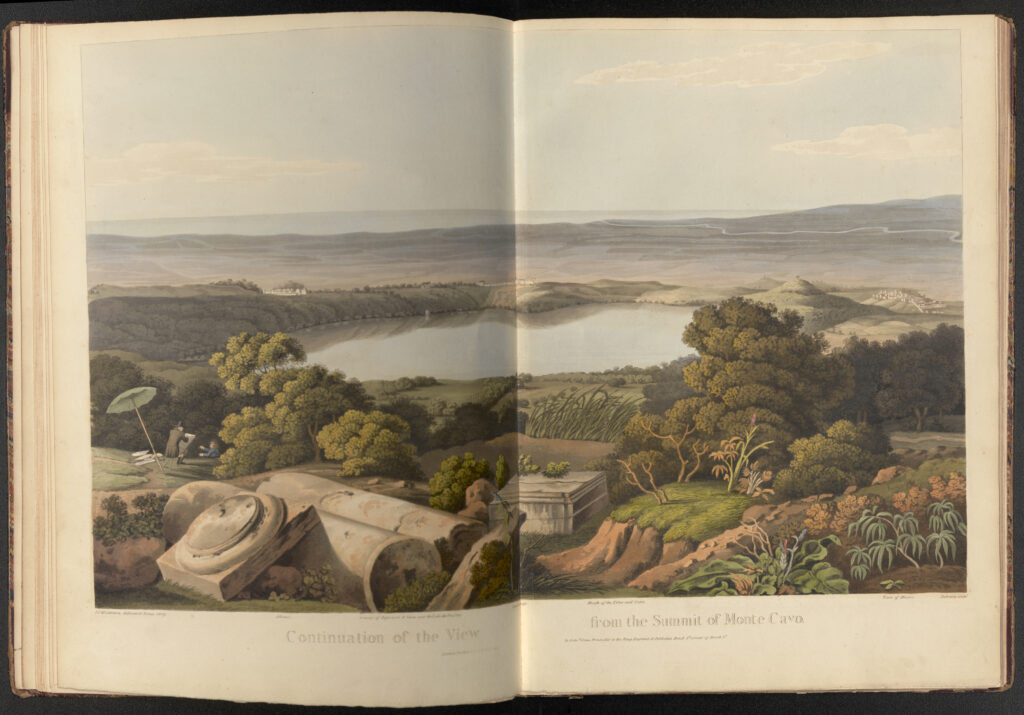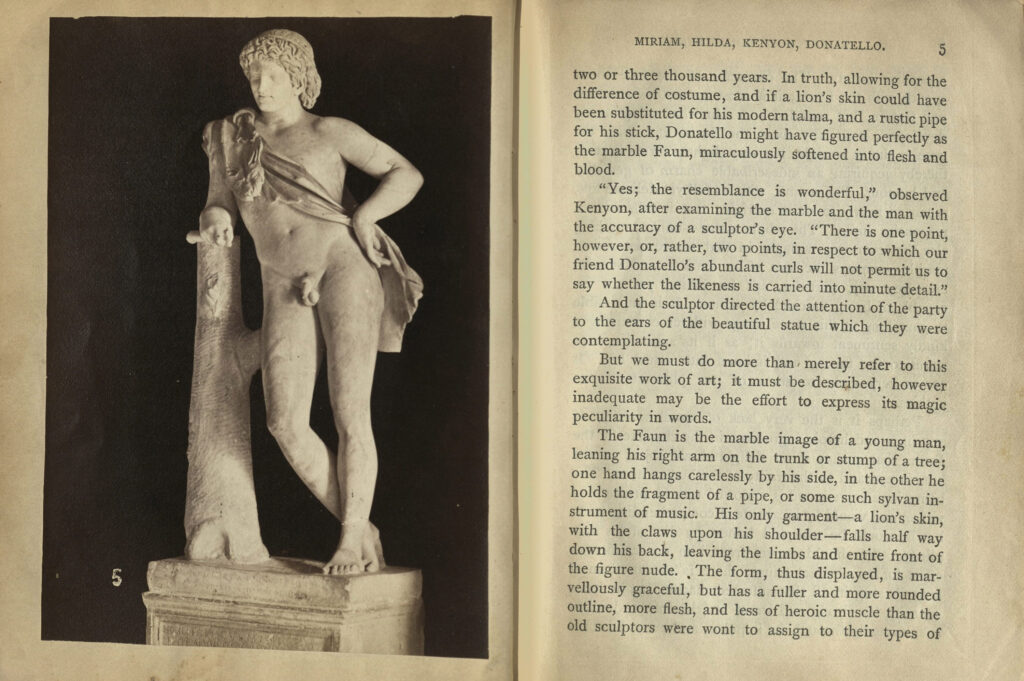Grecian Remains in Italy
McGuigan Collection
As the first monograph published by an American on ancient art and archaeology, John Izard Middleton’s Grecian Remains in Italy (1812) marked a milestone in American study of the ancient Mediterranean. Featuring twenty-two richly colored aquatints based on watercolors by the artist and another two plates of engravings, the lavishly illustrated volume was based on notes and sketches that Middleton made while travelling through Italy in 1808 and 1809.
Middleton’s deep knowledge of ancient history and literature is apparent in the scholarly text he authored to accompany his illustrations, panoramic vistas of central Italy and close studies of archaeological ruins at sites like Alatri and Segni. Albeit an amateur artist without formal training, Middleton’s studies reproduced in Grecian Remains are both technically skilled and architecturally accurate, enabling American and European readers to study in detail newly uncovered ancient ruins. At the end of the nineteenth century, Charles Eliot Norton, the Harvard professor and eminent American art historian and authority on ancient art, described Middleton as America’s first classical archaeologist and Grecian Remains as a “cornerstone” of an emerging American field of classical archaeology.
Born into one of the wealthiest families of the Southern planter class, John Izard Middleton grew up at Middleton place, a plantation outside of Charleston, South Carolina. Middleton’s grandfather had served as President of the First Continental Congress (1774), and his father had been a signer of the Declaration of Independence, while his nephew Williams Middleton would later sign South Carolina’s succession. The family’s wealth, built on enslaved labor in the Southern economy, enabled Middleton to spend most of his adult life touring Europe, while his older brother Henry transformed Middleton Place into a major rice plantation. Though the brick Tudor-style main house did not feature the classicizing architectural details of some American homes and plantations, as members of the Southern elite, the Middleton family was well acquainted with the ancient world, and the furnishings and art displayed in their home reflected the cultured and classicizing tastes appropriate of their status. During the colonial period, the young Middleton males were schooled in England, and John Izard Middleton’s father and mother made the Grand Tour between 1768 and 1771, during which they acquired artworks and books and had their portrait painted by Benjamin West in London. John Izard Middleton, like all male members of his family and wealthy American males in general, was well schooled in ancient literature; Grecian Remains references works of Greek and Roman literature that go far beyond a passing acquaintance with the subject.
Grecian Remains focuses on the pre-Roman remains of central Italy, thought to have derived from Greek influence. The focus on these early remains was probably partly due to the influence of his travelling companion, Arthur Dodwell (1767–1832), an Irish painter whose passion for classical archaeology had been ignited during a five-year sojourn in Greece, from which he had just returned. While in Greece, Dodwell had studied archaeology and ancient architecture with William Gell (1777–1836), a prominent English archaeologist. But Middleton’s interest in Italian antiquity was not confined to pre-Roman sites. A second volume, Roman Remains in Italy, was planned and drafted by Middleton in the 1820s but went unpublished until the manuscript was rediscovered in the South Caroliniana Library and published by the University of South Carolina Press in 1997.






